Do you know that more than 95% of the cases of slip disc can be treated without surgery. Even if surgery is needed, the surgery can now be done in an advanced minimally invasive manner under neuromonitoring control with more than 98% success rate.
Kindly Share Xray/MRI Report with us
Whenever a patient of disc prolapse , low back pain, sciatica , numbness or weakness of legs presents to us, a detailed clinical assessment of the patient is done first. Detailed complaints of the patients are listened to find out the duration of complaints, frequency of complaints and we try to determine how has these complaints affected patient's quality of life.We formally calculate patients disability based on oswestry disability index. A detailed neurological examination of the patient is done to look for any muscle weakness or numbness in the legs.
The first line of treatment is usually physiotherapy, exercises
(Please go to our youtube channel or exercise page for details),
medicines and modification of lifestyle
(Please go to our youtube channel for details)
But still there are some patients who need surgery for disc prolapse and delaying surgery in these cases can be catastro
There are 2 kinds of spinal injections that are given for disc prolapse
Microdiscectomy is a minimally invasive spine surgery which is performed through a 1 to 1.5 inch incision. In this surgery, the bone compressing over the nerve root or the disc from under the nerve root is removed under microscopic vision without damaging the normal musculoligamentous structures and joints and thus preserving spinal stability.
A microdiscectomy is more reliable in relieving leg pain than relieving back pain.
After a microdiscectomy procedure, usually leg pain is relieved immediately and patients usually go home on the same day or next day of surgery with significant pain relief.
If patient has weakness or numbness in the leg that usually takes some weeks or months to improve and may not improve fully in a few patients especially if surgery is done late after onset of weakness/numbness.
We usually do dynamic x-rays of spine before undertaking the procedure. These x-rays help us to assess spinal stability. Microdiscectomy is a highly successful surgery in patients whose main complaint is leg pain and they have minimal back pain and there is no instability on dynamic x-rays
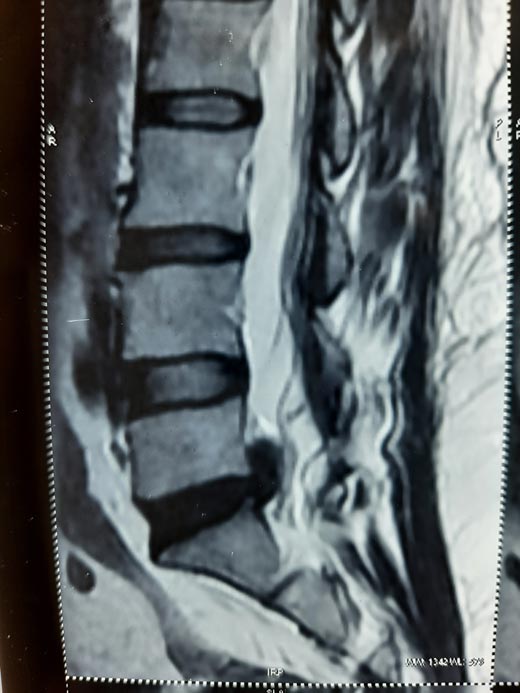

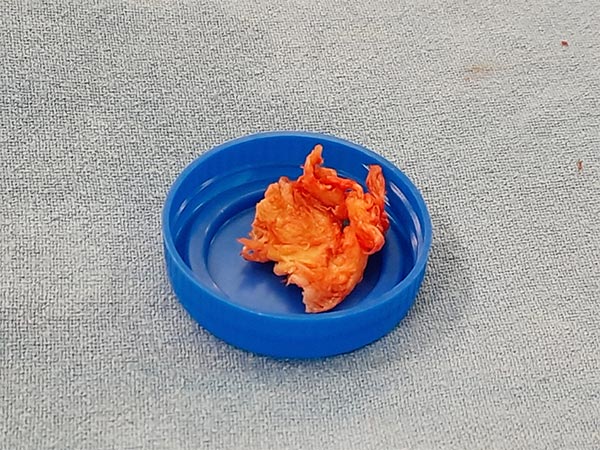
The spinal column is made up of a series of bones (vertebrae) stacked onto each other. These bones are cushioned by discs in between them. The discs protect the bones by acting as shock absorbers from daily activities like walking, lifting, and twisting.
Each disc has two parts: a soft, gelatinous inner portion (Nucleus pulposus) and a tough outer ring (Annulus fibrosus).
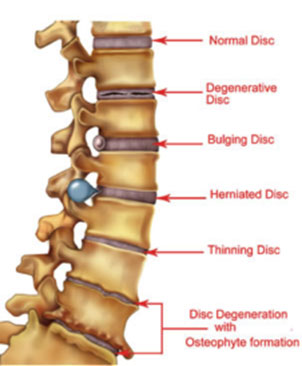
A slipped disc refers to an intervertebral disc of the spine that has lost its normal shape and/or consistency. The altered shape occurs when the disc’s nucleus bulges or leaks out of its annulus. Several medical terms, such as herniated, ruptured, torn, bulged, or protruding disc may be used interchangeably with a slipped disc
You can have a slipped disc in any part of your spine, from your neck to your lower back. The lower back is one of the more common areas for slipped discs. Your spinal column is an intricate network of nerves and blood vessels. A slipped disc can place extra pressure on the nerves and other structures around it.
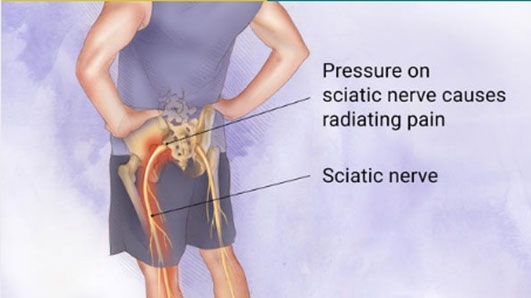
The types of pain can vary from person to person. See your doctor if your pain results in numbness or tingling that affects your ability to control your muscles.
A doctor can accurately diagnose a slipped disc and rule out other causes of similar pain, such as tumors, fractures, or infection. A correct diagnosis also helps formulate an effective treatment plan to control your symptoms and prevent the progression of nerve or spinal cord damage.
You should consult with your doctor for any neck or back pain significant enough to limit activity, any back pain that lasts more than a few days, or any neck or back pain associated with numbness or weakness, loss of bladder or bowel control, fever, or abdominal or chest pain. The doctor may suggest an urgent office evaluation or may advise you to go to the hospital's emergency department.
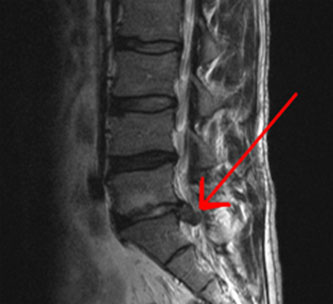
Any injury that may suggest more significant back or neck problems, such as a fall from a height or a direct blow to the spine, should be evaluated at the hospital's emergency department. Consider calling for help. Medical teams can immobilize the spine and protect against further damage.
You should also seek emergency evaluation if the pain or symptoms are severe enough to prevent you from walking, are associated with severe numbness or weakness of any extremity, are associated with loss of bowel or bladder control, or are associated symptoms not readily explained by the spine problem (such as fever, abdominal pain, or chest pain).
Your doctor will first perform a physical examination. They will be looking for the source of your pain and discomfort. This will involve checking your nerve function and muscle strength, and whether you feel pain when moving or touching the affected area. Your doctor also will ask you about your medical history and your symptoms. They will be interested in when you first felt symptoms and what activities cause your pain to worsen.
Imaging tests can help your doctor view the bones and muscles of your spine and identify any damaged areas. Examples of imaging scans include:
Treatments for a slipped disc range from conservative to surgical. The treatment typically depends on the level of discomfort you’re experiencing and how far the disc has slipped out of place.
Most people can relieve slipped disc pain using an exercise program that stretches and strengthens the back and surrounding muscles. A physical therapist may recommend exercises that can strengthen your back while reducing your pain.
If your slipped disc pain does not respond to over-the-counter treatments, your doctor may prescribe stronger medications. These include:
We take special precautions to make the spine surgery very safe. Some of our practises that have helped are as follows
Your doctor may recommend surgery if your symptoms do not subside in six weeks or if your slipped disc is affecting your muscle function. Your surgeon may remove the damaged or protruding portion of the disc without removing the entire disc. This is called a microdiscectomy.
It is a minimally invasive procedure performed through a tubular device and designed to relieve pain caused by herniated disc pressing on nerve roots. It is performed by technologically advanced and newer instruments to remove the prolapsed disc with very small incision, decrease dissection and decreased disruption of normal tissue. An incision of size 5 mm is made over the site of disc.
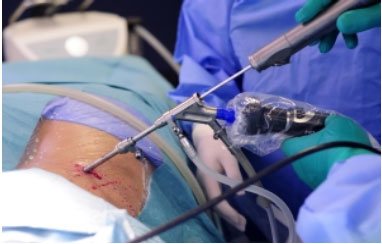
Because the incision is so small, there is negligible surgical trauma to normal tissue and muscles, negligible blood loss. Special retractors are placed in the incision. An endoscope, which is basically a tube with camera at the tip is placed inside the incision and we reach to the spine. Small amount of bone is removed and herniated disc is removed through that hole. Free nerve root is visualised through the endoscope.
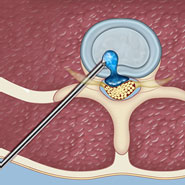
Then endoscope and retractors are removed. Since the incision is so small some surgeon choose to put band aid over the wound. Usually the scar of surgery is not noticeable after a month time.
This can also be done by a small key hole incision – Endoscopic Discectomy In more severe cases, your doctor may replace the disc with an artificial one or remove the disc and fuse your vertebrae together. This procedure, along with a laminectomy and spinal fusion, adds stability to your spinal column.
Most people with a slipped disc respond well to conservative treatment. Within six weeks their pain and discomfort will gradually lessen.
It may not be possible to prevent a slipped disc, but you can take steps to reduce your risk of developing a slipped disc. These steps include:
feel free to contact us!